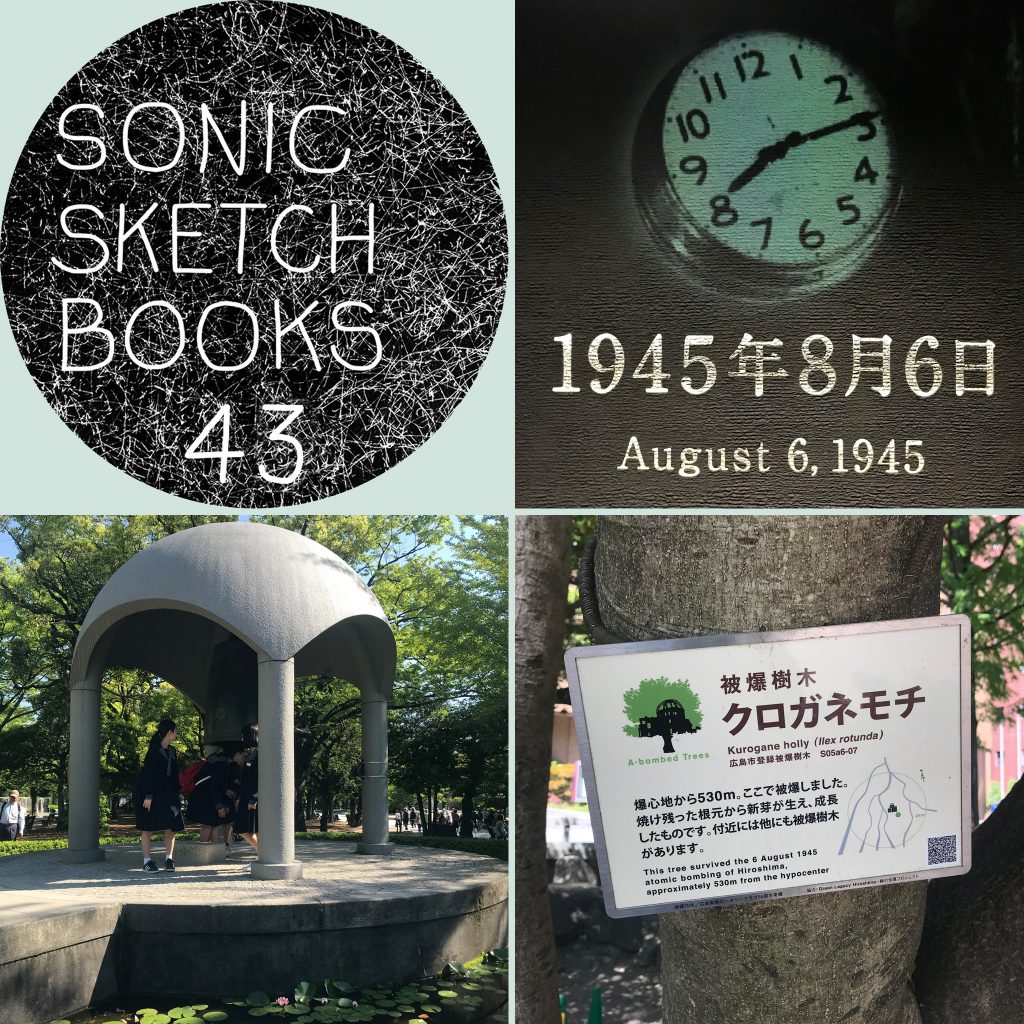
release date: 26 october 2021
With three companions I travelled to Japan in May 2018. One of the reasons was to finally visit Hiroshima, to be present and pay my respects at the site of one of the principal atrocities of the 20th century.
This episode comprises excerpts from recordings I made over the three days we spent staying on the rural outskirts of the city, journeying to visit Hiroshima’s Museum of Contemporary Art, A-Bomb Museum, Peace Park and the skeletal Genbaku Dome remains that, along with the mushroom cloud, have become the enduring symbols of that awful moment at 8:15am on the 6th of August 1945 when over 70,000 people were instantly extinguished from life on earth.
Seventy years on, the Hiroshima we visited was like other well-known Japanese cities – bustling, teeming with tourists, peppered with temples and shrines, little restaurants and bars, department stores, multi-story residential buildings, the unique scents and sounds of Japanese daily life.
A surprising encounter was with trees that survived the bomb blast and live on to shade inner city streets. Each is considered a living treasure – a green legacy – known collectively as the Hibakujumoku. One is an eastern Australian Eucalypt, a yellowbox, that survived in the grounds of the completely destroyed 16th century Hiroshima Castle.
This sound wander begins and ends with birdcall around the air-b&b we stayed in, a farm house surrounded by rice paddies about to be planted out. Our hosts were a lively elderly couple who greeted us with hibachi grill, onigiri, beer and sake.
We took a local train into Hiroshima – you’ll hear a Shinkansen bullet train shoot through the station in excess of 200km per hour – and spent the day walking from site to site contemplating the dreadful recurrent reality of destructive warfare, the human ability for renewal, and the enduring hope and work for peace despite and because of the persistent pernicious presence of military madness.
The bell you will hear is the Peace Bell funded by a survivor’s group and forged in 1964. Installed in a small domed concrete structure within the Peace Park it can be sounded by anyone to signal their desire for peace. A moat surrounding the structure is planted with the progeny of 2000 year old lotus seeds germinated by Japanese scientist Professor Ichiro Oga. They reference that survivors wrapped their savagely blistered burnt bodies with lotus leaves in attempts to alleviate their pain.
